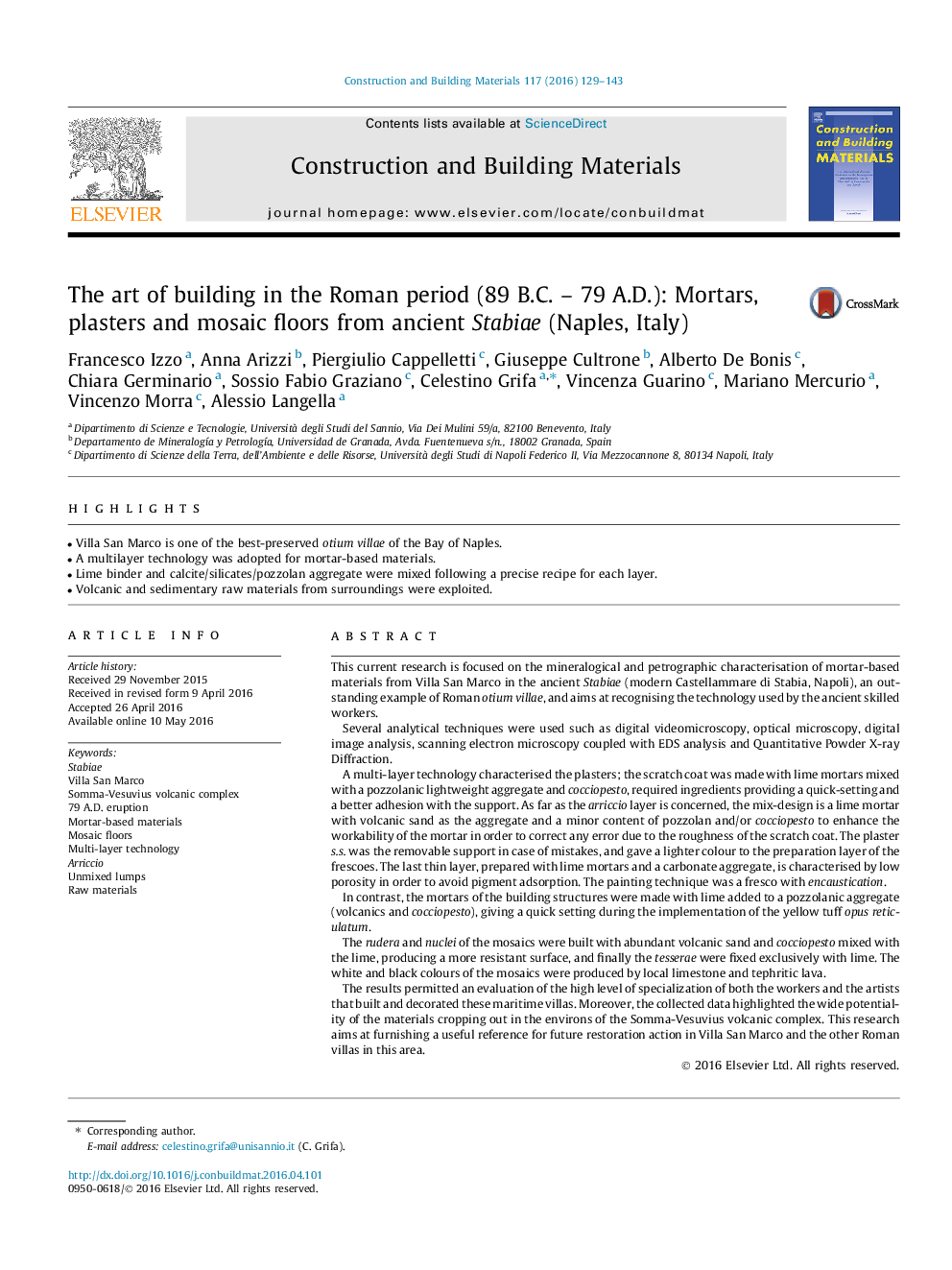| کد مقاله | کد نشریه | سال انتشار | مقاله انگلیسی | نسخه تمام متن |
|---|---|---|---|---|
| 256113 | 503541 | 2016 | 15 صفحه PDF | دانلود رایگان |

• Villa San Marco is one of the best-preserved otium villae of the Bay of Naples.
• A multilayer technology was adopted for mortar-based materials.
• Lime binder and calcite/silicates/pozzolan aggregate were mixed following a precise recipe for each layer.
• Volcanic and sedimentary raw materials from surroundings were exploited.
This current research is focused on the mineralogical and petrographic characterisation of mortar-based materials from Villa San Marco in the ancient Stabiae (modern Castellammare di Stabia, Napoli), an outstanding example of Roman otium villae, and aims at recognising the technology used by the ancient skilled workers.Several analytical techniques were used such as digital videomicroscopy, optical microscopy, digital image analysis, scanning electron microscopy coupled with EDS analysis and Quantitative Powder X-ray Diffraction.A multi-layer technology characterised the plasters; the scratch coat was made with lime mortars mixed with a pozzolanic lightweight aggregate and cocciopesto, required ingredients providing a quick-setting and a better adhesion with the support. As far as the arriccio layer is concerned, the mix-design is a lime mortar with volcanic sand as the aggregate and a minor content of pozzolan and/or cocciopesto to enhance the workability of the mortar in order to correct any error due to the roughness of the scratch coat. The plaster s.s. was the removable support in case of mistakes, and gave a lighter colour to the preparation layer of the frescoes. The last thin layer, prepared with lime mortars and a carbonate aggregate, is characterised by low porosity in order to avoid pigment adsorption. The painting technique was a fresco with encaustication.In contrast, the mortars of the building structures were made with lime added to a pozzolanic aggregate (volcanics and cocciopesto), giving a quick setting during the implementation of the yellow tuff opus reticulatum.The rudera and nuclei of the mosaics were built with abundant volcanic sand and cocciopesto mixed with the lime, producing a more resistant surface, and finally the tesserae were fixed exclusively with lime. The white and black colours of the mosaics were produced by local limestone and tephritic lava.The results permitted an evaluation of the high level of specialization of both the workers and the artists that built and decorated these maritime villas. Moreover, the collected data highlighted the wide potentiality of the materials cropping out in the environs of the Somma-Vesuvius volcanic complex. This research aims at furnishing a useful reference for future restoration action in Villa San Marco and the other Roman villas in this area.
Journal: Construction and Building Materials - Volume 117, 1 August 2016, Pages 129–143